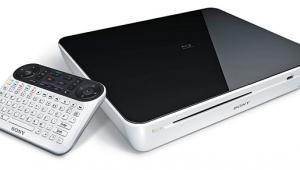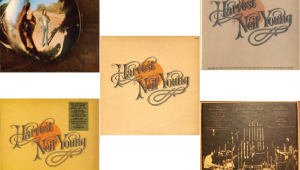Philips BDP7501/F7 Ultra HD Blu-ray Player Page 2
480i, 1080i, and 1080p
Unless otherwise noted, all of the testing here—as well as the viewing of Full HD (1080p), non-UHD/HDR sources—was done on the Samsung 65KS9800 TV (reviewed in our October issue).
 Our preliminary bench tests for video, as applied to an Ultra HDTV, include the set’s upconversion of regular SD and HD sources all the way to the 4K pixel array (3840 x 2160) that a UHDTV requires to fill its screen. Since the Philips player, and not the flat-screen display, was under evaluation here, I set the Philips’ output resolution to 4K for the tests, to ensure that the player was doing all of the heavy lifting for the upconversion.
Our preliminary bench tests for video, as applied to an Ultra HDTV, include the set’s upconversion of regular SD and HD sources all the way to the 4K pixel array (3840 x 2160) that a UHDTV requires to fill its screen. Since the Philips player, and not the flat-screen display, was under evaluation here, I set the Philips’ output resolution to 4K for the tests, to ensure that the player was doing all of the heavy lifting for the upconversion.
The Philips passed our MA (motion adaptive) HD test, but it failed the 3:2 HD (film) and 2:2 HD tests. The latter failure was due to minor moiré visible in the test image, and the 3:2 HD failure was because of image stuttering that settled down after several passes but repeated every time the test was reset. The player passed the 2:2 SD (480i standard definition) and MA SD upconversion tests, but it marginally failed 3:2 SD. Obvious jaggies were spotted on the early 480i DVD release of Titanic (mostly, scans across the ship’s railings—a fierce test). But overall, such artifacts were never intrusive on typical program material.
A resolution issue did show up when I began watching regular 1080p Blu-rays. With the player set to output 4K—meaning that the player was doing the upconversion of 1920 x 1080 sources to 3840 x 2160—I noticed that the picture was a bit less crisp than what I’m accustomed to seeing on the Samsung TV at a normal viewing distance. It was barely perceptible, but material with which I’m intimately familiar (a Pioneer Blu-ray demo disc from 2006 and the Pixar animated feature Brave) lacked that last amount of detail and dimensionality that separates a very good picture from a great one.
When I switched the Philips’ output from 4K to 1080p, however, thus shifting the upconversion function from the player to the TV, this minor concern disappeared. This suggests that the Philips’ upconversion from 1080p to 4K, while competent, could be better. If you’re as fussy as I am about such things (and you likely are if you’re jumping aboard the Ultra HD Blu-ray train this early in its life), you’ll want to switch manually between 1080p and 4K on the Philips’ Resolution menu to get the best, respectively, from 1080p and 4K sources (assuming your set has excellent upconversion). While this is relatively easy to do, it’s still a nuisance. I wish the Philips player had a Source Direct mode, which would eliminate any need for a manual Resolution switch.
With the Philips’ output thus set to 1080p, and 4K upconversion being performed onboard the Samsung UHDTV, the player’s audio/video performance was impeccable. Apollo 13 could hardly have looked better in its 1080p form. The earthbound scenes in this movie have always appeared to be a little less than reference quality, as they did here, but the shots inside the space capsule were stunning. Nor did the Philips’ sound fall short in delivering the rousing rocket launch, accompanied by James Horner’s epic score.
Animation is, of course, a bit of a cheat: It nearly always looks great. But when I popped one of my favorites, How to Train Your Dragon, into the loading tray, little did I suspect that I’d be compelled to sit through the entire movie again. It still has some of the best animated images around, and the Philips didn’t flinch in providing a picture and sound that I couldn’t fault.
Just to be certain that I wasn’t reacting more to the Samsung LCD TV than to the Philips player, I moved my viewing temporarily to the Sony XBR-X930D that I’d recently reviewed and cued up the documentary Samsara. While director Ron Fricke has a taste for the bizarre, depressing, and ugly, he also has an eye for the unusual and beautiful. In Samsara, there’s plenty of all of this. His shots of Tibetan mandalas, exotic Asian costumes, and sharply delineated sunlight and shadows in the desert were gorgeously resolved by the Philips player on the Sony UHDTV.
For buyers with a current and perhaps growing collection of Bluray 3D Discs, the Philips’ 3D capability might be an important factor separating this player from the strictly 2D Samsung player. [Ed. Note: Panasonic’s DMP-UB900 is also spec’d for 3D Blu-ray.—RS] I briefly checked out the Philips’ 3D performance on the Sony TV and had no issues with it apart from some occasional mild ghosting (which is typically an issue originating in a display or source, not in the player).
A Tale of Two Players— and Two TVs
Things didn’t begin well when the Philips sent a 4K/HDR source to the Samsung UHDTV. With the player set up as noted earlier, the TV failed to show HDR. Instead, it flashed a message on the screen: “Dynamic Range Conversion Output.” The set also didn’t switch to its HDR picture settings, as it does automatically when it receives an HDR signal from the Samsung player.

This prompted an e-mail exchange with Philips. I then remembered that a few days earlier, to run a different test, I had switched off the Samsung TV’s HDMI UHD Color control. This, in effect, told the Philips player that the set had only an HDMI 1.4b connection and thus couldn’t play HDR, so it sent over what it though the TV could handle. Interestingly, the Samsung player, even with the HDMI UHD Color set to Off, does produce 4K/HDR on the Samsung TV (though without advanced color). There’s a lesson in this: We’re still in the earliest days of a new format, and the HDR compatibility of any Ultra HD Blu-ray player with any Ultra HDTV might well depend on specific settings for both. If at first you don’t succeed, start pushing buttons.
Finally, I was able to press on, and I found nothing to complain about in the Philips’ UHD/HDR performance. The Martian, Life of Pi, Star Trek: Into Darkness, and Independence Day all looked spectacular in UHD. It was hard to find any flaw in the duo of Philips player and Samsung TV. But that was also the case when I viewed the Samsung player on the Samsung TV. The two players were neck and neck in video and audio performance. At first, I thought the Philips player was a hair sharper than the Samsung, but close comparisons couldn’t confirm this. (At least, the comparisons were as close as I could make them. For a variety of reasons, a direct A/B comparison wasn’t possible.) I was also able to try the Philips player on the Sony TV, and it worked beautifully there as well.
The one UHD glitch in the Philips was that it wouldn’t reliably play the Samsung UHD/HDR test disc—which, as I write this, is the only such disc available for limited technical testing of an Ultra HD Blu-ray player. No foul can be called here on the Philips—not only is this disc not commercially available, but my sample was a one-off beta copy to boot. But it does demonstrate, yet again, that we’re in the very early days of UHD on Blu-ray.
Conclusions
As only the second Ultra HD Blu-ray player to reach the U.S. market, the Philips BDP7501/F7 brings with it a nice form factor and compatibility with 3D 1080p Blu-ray Discs that may be important to some buyers. On the other hand, the player’s limited streaming options and less-than-top-notch 1080p-to-2160p scaling might be of concern. But in its primary job, playing Ultra HD Blu-rays, the Philips provides excellent performance at an attractive price.
- Log in or register to post comments


































































